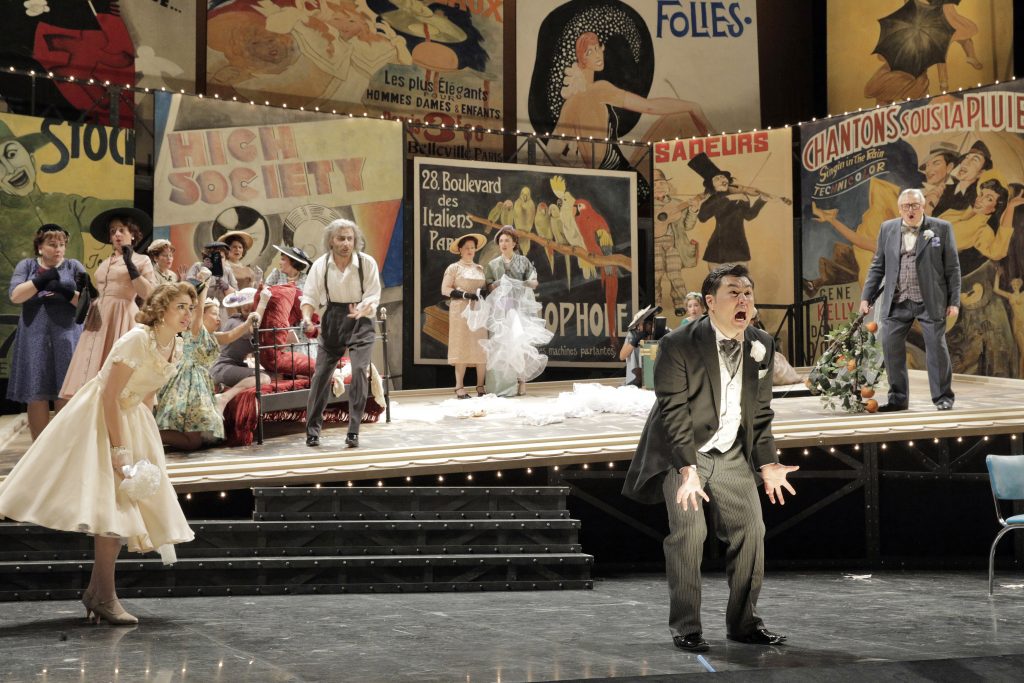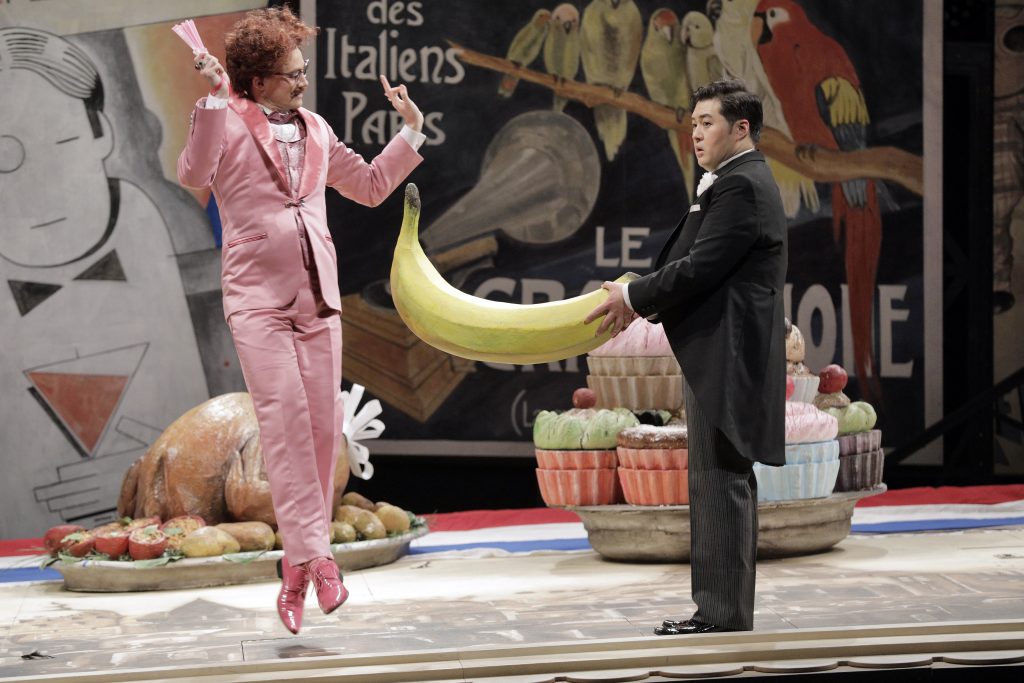By David Dies, Special to The Sybaritic Singer
MN Opera Photos by Cory Weaver
There are many aspects of Nino Rota’s The Italian Straw Hat that are refreshing, while the opera’s story, music, and Minnesota Opera’s production indulge a fair amount of nostalgia. When many operas are driven toward a marriage, The Italian Straw Hat is written around a marriage, following the groom’s quest for the titular straw hat while dodging his father-in-law and a pack of wedding guests. When many farcical operas lean hard on suspension of realism, the request that first ensnares Fadinard in his quest for the hat makes sense socially and the action that follows flows logically, providing a solid armature for the farce.
The action concerns the groom, Fadinard, trying to find a replacement for a young woman’s couture straw hat which his horse accidentally ate. The woman had been on a dalliance in the woods with a young soldier, and upon the discovery that the hat has been eaten by Fadinard’s horse, the pair initially confront Fadinard, then follow him home in order to cajole and threaten the groom into finding a replacement so that the woman’s husband doesn’t ask any questions. It quickly becomes clear that the hat is virtually irreplaceable, which leads the groom (and his pursuers) to a milliner’s shop, a duchess’s home, and ultimately the young woman’s husband, who is already suspecting that his wife is having an affair. The story moves fairly predictably from there, with the groom, his wife, his father-in-law, the young woman, her wife, the soldier, and all the wedding guests back at the groom’s house with a Shakespearean tying-up-of-loose-ends and a happy ending.

The opera itself is looking to the past, set in Paris during the horse-and-buggy era and musically frequently evoking Puccini, Bizet, and other operas in the repertoire. Minnesota Opera translates this nostalgia to 1950s costuming and a backdrop made from early-20th-century-style French posters. The bulk of the action happens on an over-sized tipped 1890s Parisian postcard. The production also includes an unfortunate stress on the patriarchal concept of the “cuckold,” with an oversized painting of a hand gesture of “two horns” which has long and deservedly been lost to American sensibilities. While this is not the only over-the-top choice in the production (oversized phallic bananas and carrots, for instance), it did ring the most oddly in an era of #metoo, the Women’s March, and a record number of women in Congress. The opera is richly and well-orchestrated, as you might expect from a composer known for scoring Fellini’s La Dolce Vita and the first two Godfather films.

Tenor Andrew Stenson stands out as Fadinard, who gets a workout both in carrying the action of the show and the number of arias for the character. Dale Travis’ comic work as the father-in-law, Nonancourt, makes a potentially two-dimensional, punch-line driven character into a fully-formed concerned father. Victoria Vargas, as Baronessa di Champigny, and Christian Sanders, as Viscount Achille de Rosalba—her cousin and gay BFF—bring comic chemistry as they prepare a party for a renowned violinist, for whom Fadinard will be mistaken. This mistaken identity gambit, while a mainstay in comic opera, sets the stage for one of the most refreshing moments in the opera: Fadinard, while pretending to be the renowned violinist, presents a send up of an operatic declaration of love solely to convince the Baroness to give him the Italian straw hat she had recently purchased. Even in this, the attention to realism holds: he (speciously) claims to want the hat because he says she was wearing it the first day he saw her. Musically and dramatically, Pietro di Bianco as Beaupertuis, the husband of the philandering young woman, presents a riveting aria in which Beaupertuis begins to suspect that his wife might not be at her cousin’s as she claimed.
A light and well-paced production, Minnesota Opera presents Rota’s opera well and introduces their audience to the operatic side of a composer known for film. While the production had a few missteps, on the whole it was engaging and earned genuine laughs from the audience.
